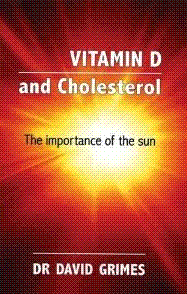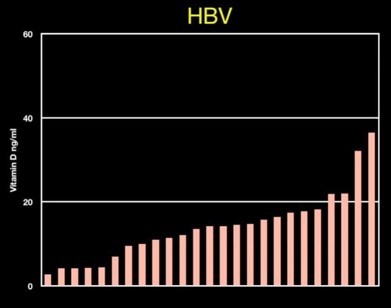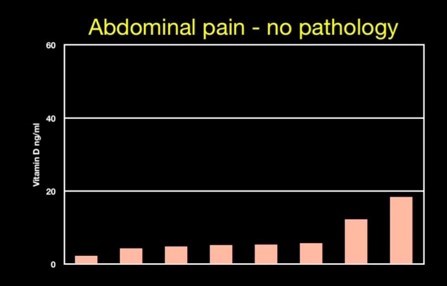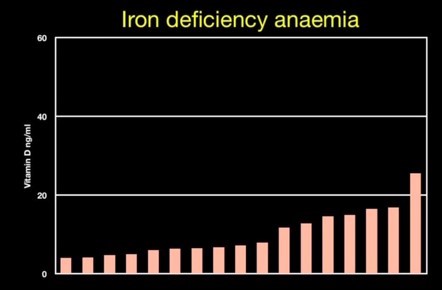Cholesterol and vitamin D book - 2009

652 page April 2009 by a UK Doctor who has lots of professional publications on the topic
Understanding illness and disease
The nature of disease
Disease patterns in the 18th and 19th centuries
The changing pattern of disease in the 20th century
The causation of disease and individual susceptibility
Possible causes of disease
Resistance to infection
Infections and the environment
The seasonality of illness
Hepatitis, tuberculosis and syphilis
Peptic ulcer – a microbial disease
Tuberculosis and South Asian ethnicity
Lessons from tuberculosis: a multifactorial disease
Glasgow: a microcosm of the industrial society
Belfast and Toulouse
Association as a clue to causation
Vitamin D
Rickets and the discovery of vitamin D
The biology of vitamin D
Tuberculosis and the sun
Part 4 – Coronary heart disease 117
18. The emergence of coronary heart disease and its decline 119
19. The biology of coronary heart disease 131
20. The causation of coronary heart disease 138
21. Psychological factors and coronary heart disease 141
22. Diet and coronary heart disease 149
23. The Leningrad paradox 164
Part 5 – Cholesterol 169
24. Cholesterol and coronary heart disease 171
25. The metabolism of cholesterol 186
26. Seasonal variation of vitamin D and cholesterol 192
27. Cholesterol-lowering therapies 204
28. The Scottish paradox and the actions of statins 216
29. The elderly paradox 224
30. The geography of cholesterol 237
Part 6 – Geography of disease 251
31. Burnley, Colne & Nelson 253
32. The geography of coronary heart disease in the UK 257
33. The geography of coronary heart disease in Europe 270
34. The geography of coronary heart disease in the USA 280
35. The Northern Ireland paradox 284
36. The French paradox and the effect of alcohol 289
37. The geography of agriculture in Europe 298
Part 7 – Sociology of disease 311
38. Socio-economic deprivation and disease 313
39. Two Albanian paradoxes 338
40. The Greek paradox - smoking and coronary heart disease 342
41. Respiratory disease and coronary heart disease 350
42. Infl ammation and coronary heart disease 357
43. Cholesterol and infl ammation 368
Part 8 – Microbes and the heart 377
44. Could coronary heart disease be caused by micro-organisms? 379
45. Chlamydia pneumoniae 385
46. Helicobacter pylori 393
47. Dental health and coronary heart disease 400
48. Infections of the heart 405
49. Koch´s postulates and the concept of proof 408
50. Science works by paradigms 415
Part 9 – Aspects of immunity 421
51. South Asian ethnicity and coronary heart disease 423
52. The spleen and coronary heart disease 431
53. Sex and coronary heart disease 435
54. Immune suppression and coronary heart disease 439
55. Chronic renal failure, vitamin D and coronary heart disease 443
Part 10 – Diabetes, environmental factors, and climate 451
56. Diabetes and vitamin D 453
57. The metabolic syndrome and insulin resistance 462
58. The maternal factor and non-genetic inheritance 476
59. Hepatitis C virus, diabetes and the metabolic syndrome 487
60. Atmospheric pollution and the emergence of coronary heart disease in newly industrialising countries 491
61. The climate of the British Isles 502
62. Model of disease and environment 508
Part 11 – Protection by the sun from cancers and other diseases 513
63. Protection against cancer by vitamin D and sunlight 515
64. Crohn´s disease 539
65. The sun, vitamin D and diseases of the central nervous system 550
66. Rheumatic and auto-immune disorders 561
67. Is the sun dangerous? 567
Part 12 – Epilogue 581
68. Vitamin D and statins 583
References 593
His summary of a 2008 paper on lack of vitamin D in the UK
Video May 2011 following are a few of the charts
Horizontal axis = individual patient - sorted by vitamin D level: clearly low vitamin D associated with each disease




His website - checked Nov 2014
His comment on Statins June 2010
Statins, cholesterol and vitamin D
It is well known that medications called statins reduce the amount of cholesterol in the blood. This is the reason for which millions of people take them, and this is their only licensed use. There are however several anomalies.
First, statins are of equal value to people with low levels of cholesterol in the blood as to those with high levels. Second, the benefit is the same no matter the amount by which the blood level of cholesterol is reduced. These facts immediately suggest that the undoubted, and greater than expected, value of statins might be due to a property other than their ability to reduce cholesterol.
Statins have a very specific metabolic effect in the inhibition of an enzyme called HMG-CoA reductase. True as this undoubtedly is, statins also have other metabolic effects, the nature of which are unknown or unpublished.
The unexpected published benefits of statins include the following:
Reduced incidence of new diabetes
Reduced rejection rate after kidney and heart transplantation
Reduced incidence of colon, lung and prostate cancers
Improvement of multiple sclerosis
Improvement of rheumatoid arthritis
Increased bone density of post-menopausal women
Improvement of heart failure
Reduction of the incidence of infections
Increase in stem cell production in the heart
Improvement in tissue repair
Reduction of blood pressure
Anti-inflammatory effects and reduction of TNFµ (inflammatory mediator)
Enhancement of immunity
We are accustomed to drugs having unforeseen and undesirable side-effects, but it is most unusual, even unprecedented, for a drug to have such a wide range of unexpected beneficial effects. They are clearly doing something fundamental to the body, something that has nothing whatsoever to do with cholesterol lowering.
It is as though statins are a vitamin, as clearly they have a vitamin-like beneficial effect. Are they somehow a new hitherto undiscovered vitamin? Or are they mimicking a known vitamin? If so, which vitamin is it?
The wide range of benefits is very similar to the known effects of vitamin D. It would therefore appear that statins are acting like vitamin D, activating vitamin D receptors in the body.
Cholesterol category in Vitamin D Life starts with the following
{include}
